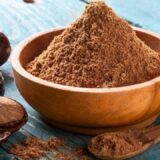Winter Ayurvedic Diet: Foods to Keep You Warm and Balanced
Ayurveda, the ancient Indian science of life, is a holistic system that focuses on balancing mind, body, and spirit through diet, lifestyle, herbal treatments, and other practices. One of the key elements of Ayurveda is the concept of Agni, or digestive fire, which plays a crucial role in health.
As the seasons change, so too should our diet, lifestyle, and daily routines to maintain balance and harmony within our bodies. According to Ayurveda, the food we eat, the way we prepare it, and the timing of meals all influence our physical and mental health.
As winter approaches, particularly in the northern temperate regions, Ayurveda offers specific guidelines on how to adapt your diet and lifestyle to the colder conditions. Subhash Markande, an Ayurvedic doctor at the Kalari Rasayana Ayurvedic Clinic in Kerala, explains how to adjust your eating habits during the winter months, based on Ayurvedic principles.
Ayurveda’s Seasonal Framework: Understanding the Six Seasons
Ayurveda has a unique approach to the calendar, recognizing six distinct seasons (Ritu) instead of the four seasons we are used to in the Western calendar. These six seasons, each lasting about two months, are:
- Shishira – Peak winter (mid-January to mid-March)
- Vasanta – Spring (mid-March to mid-May)
- Grishma – Summer (mid-May to mid-July)
- Varsha – Monsoon (mid-July to mid-September)
- Sharat – Autumn (mid-September to mid-November)
- Hemanta – Early winter (mid-November to mid-January)
Each of these seasons affects the doshas—the three fundamental energies in the body that govern various physiological and psychological functions. The doshas are Vata (air and space), Pitta (fire and water), and Kapha (earth and water).
Ayurveda maintains that a healthy body is one in which the doshas are balanced, and seasonal changes can either increase or decrease these doshas, causing potential imbalances.
For example, Vata tends to increase during the dry and cold months of winter, leading to conditions such as dryness in the skin, joints, and digestive system.
The Pitta dosha, associated with heat, tends to decrease, while Kapha, which is associated with cold and dampness, can become more pronounced in the colder seasons. It is essential to adapt our routines and diets to counter these shifts and maintain equilibrium in our bodies.
Ritucharya: The Ayurvedic Seasonal Regimen
The concept of Ritucharya—the Ayurvedic seasonal regimen—is crucial to understanding how to maintain balance throughout the year. The word Ritu refers to the season, and Charya means routine or discipline. Ritucharya emphasizes adjusting your daily routine, diet, and lifestyle according to the needs of each season.
Ayurveda teaches that by aligning our habits with the seasons, we can support our immune system, increase vitality, and minimize the effects of seasonal changes on our health.
For each season, Ayurveda offers specific dietary guidelines, daily routines, and lifestyle modifications to support overall well-being. Following Ritucharya ensures that we are nourishing our bodies in a way that is aligned with the natural cycles of the environment. I
n the winter season, particularly Hemanta and Shishira, Ayurveda recommends warmth, nourishment, and protection from the cold to maintain a healthy digestive system and balanced doshas.
Winter (Hemanta): The Early Winter Season
The Hemanta season marks the beginning of winter and typically lasts from mid-November to mid-January. During this time, the weather grows colder, and the body needs to adjust to the environmental changes.
Ayurveda advises that the early winter season is characterized by Vata and Kapha increases. These doshas can lead to dry skin, roughness, sluggish digestion, and excess mucus production. To balance these effects, Ayurveda recommends consuming foods that are warm, nourishing, and grounding.
Foods to Eat in the Early Winter (Hemanta)
In the early winter, Ayurveda suggests focusing on foods that help strengthen the digestive fire (Agni) and provide warmth and nourishment. The recommended tastes for this season are:
- Madhura (sweet)
- Amla (sour)
- Lavana (salty)
These tastes are warming and grounding, making them ideal for the cold months. Here are some specific dietary recommendations for Hemanta:
1. Meat and Meat Soups
Meat and meat-based soups are highly recommended during this season because they are rich in fats and proteins, which help keep the body warm. Soups, especially when cooked with oils or fats, provide the necessary calories to fuel the body during the cold months. In Ayurveda, these soups are said to promote strength and vitality.
2. Legumes
For vegetarians, black lentils (urad dal) and other legumes are excellent sources of protein and nourishment. These foods are also grounding and provide long-lasting energy, which is essential during the colder months when the body requires more fuel to maintain warmth.
3. Warming Oils
Ayurveda recommends using warming oils like sesame and mustard oil for cooking. These oils are not only nourishing but also help maintain internal heat. They have anti-inflammatory properties that soothe the body and improve digestion, which tends to slow down during winter.
4. Dairy Products
Dairy is considered beneficial in winter, especially cow’s milk, which is grounding and nourishing. Warm milk with spices like turmeric, cardamom, or ginger is a comforting drink that enhances digestion and helps calm the mind. Ghee (clarified butter) is also beneficial during this season, as it lubricates the body and supports healthy digestion.
5. Fats and Oils
Consuming fats during the winter is important because they help lubricate the body and provide warmth. Ayurveda suggests adding ghee (clarified butter) and healthy vegetable oils to meals. These oils can be drizzled over warm foods like rice, soups, and vegetables for added nourishment.
6. Sweets and Molasses
Jaggery, made from sugarcane juice, is highly recommended in winter as it provides warmth and boosts digestion. Molasses-based products are also ideal for the cold season, as they help detoxify the body and enhance circulation.
Foods to Avoid
While winter calls for heavy, warming foods, Ayurveda also cautions against certain foods that can disrupt Agni’s balance and lead to doshas’ imbalances. These foods include:
- Raw Vegetables: While raw vegetables are healthy during warmer months, they can be difficult to digest in winter. The cold temperatures may dampen the digestive fire, leading to bloating or discomfort after consuming raw foods.
- Cold Drinks: Ayurveda advises against drinking cold water or cold beverages during winter, as they can extinguish the digestive fire and hinder the absorption of nutrients.
- Spicy, Bitter, and Astringent Foods: These foods are too stimulating for the body during winter and can aggravate the Pitta dosha. They can lead to dryness in the body, creating imbalances in the skin and digestive system.
Late Winter (Shishira): The Active Winter Phase
Following Hemanta, the active winter season begins in mid-January and lasts until mid-March, known as Shishira. During this phase, our digestive fire (Agni) is at its peak, and we require calorie-dense, oily foods to sustain energy levels.
The body needs additional energy to combat the cold and to fuel the increased physical activity that comes with winter. During Shishira, Ayurveda recommends continuing the dietary practices from Hemanta, with an emphasis on eating heavier, richer foods that can support our digestive capacity.
Foods such as soups, stews, and meat-based dishes are especially beneficial during this time. Additionally, ghee and oils should continue to be incorporated into meals to ensure the body remains warm and nourished.
Seasonal Drinks to Support Immunity
In Ayurveda, the winter season is also an ideal time to consume seasonal beverages that support digestion, boost immunity, and promote warmth. Here are two Ayurvedic drinks that are particularly beneficial during the winter months:
1. Ginger Juice with Lime and Himalayan Salt
Ingredients:
- 1 teaspoon of ginger juice
- 1 teaspoon of lime juice
- A pinch of Himalayan salt or black salt
- A pinch of black pepper
Preparation: Mix all the ingredients together and drink.
Benefits: This detox drink enhances metabolism, aids digestion, and helps alleviate digestive disturbances caused by improper eating. It stimulates the appetite and is rich in vitamins B and C, as well as magnesium, which helps boost immunity and combat cold-related illnesses.
2. Pomegranate Ginger Cocktail
Ingredients:
- 1 teaspoon of ginger powder
- 1 teaspoon of coriander seeds
- A pinch of Himalayan salt
- 1 glass of pomegranate juice
- 1 glass of water
Preparation: Add ginger and coriander seeds to boiling water and continue boiling until the liquid reduces to a quarter of its original volume. Cool to room temperature and then mix with pomegranate juice. Add a pinch of Himalayan salt and stir.
Benefits: This drink strengthens immunity, supports the digestive system, and helps with iron absorption. It also lowers blood sugar and cholesterol levels, while providing vitamin C, B6, iron, and magnesium.
Embracing Ayurveda for Winter Wellness
Winter, according to Ayurveda, is a season that requires attention to diet, lifestyle, and daily routines. The cold, dry nature of winter can lead to imbalances in the body, particularly by increasing Vata and Kapha doshas.
By adjusting our diets to include warm, grounding, and nourishing foods, and by following a seasonal routine that supports our digestive fire, we can experience enhanced energy, better digestion, and improved overall health.
Ayurveda’s focus on balancing the body’s internal systems through diet and lifestyle during the winter months not only helps us maintain optimal health but also keeps us aligned with the natural rhythms of the earth.
By making small adjustments to our food choices and daily habits, we can thrive in the colder months, maintaining our vitality and ensuring that we stay warm and healthy through the winter season.
FAQs
1. What should we eat in Ayurveda for cold?
Answer: In Ayurveda, for cold weather, it’s recommended to eat warm, nourishing foods like soups, stews, root vegetables (e.g., carrots, sweet potatoes), grains (e.g., quinoa, rice), and healthy fats like ghee and sesame oil. Spices such as ginger, cinnamon, and cumin help promote warmth and improve digestion.
2. Is winter a Vata or Kapha season?
Answer: Winter is primarily a Vata season, associated with cold, dry, and windy qualities that increase Vata in the body. However, depending on the environment, it can also aggravate Kapha, leading to congestion and heaviness. Balancing both Vata and Kapha is important during this time.
3. How to eat properly according to Ayurveda?
Answer: In Ayurveda, eat according to your dosha, the season, and your digestive fire (Agni). It’s advised to consume freshly prepared, warm, and easy-to-digest foods. Use spices to aid digestion and focus on seasonal ingredients. Eating mindfully and avoiding overeating are key principles.
4. How to balance Pitta in winter?
Answer: To balance Pitta in winter, focus on cooling yet grounding foods like coconut, dairy, and leafy greens. Avoid excessive heat or spicy foods, and incorporate calming practices like meditation, walks in nature, or gentle yoga to keep Pitta in check.
5. Which drink is best for cold?
Answer: For a cold, warm drinks are ideal. Herbal teas such as ginger, cinnamon, or turmeric tea are soothing and help to support the immune system. Warm water with honey and lemon also helps to soothe the throat, while warm milk with turmeric can aid relaxation and healing.
6. Is ghee cooling or heating?
Answer: Ghee is considered heating in Ayurveda, making it especially beneficial during the colder months. It helps provide warmth, lubrication, and nourishment for the body, balancing the cold, dry qualities of winter.
7. How to remove Kapha from the body?
Answer: To remove excess Kapha, focus on light, stimulating foods like spicy dishes (ginger, garlic), bitter greens, and warm, dry foods. Exercise regularly, such as brisk walking or vigorous yoga, and avoid heavy, oily, and cold foods to reduce Kapha’s dampness and sluggishness.
8. How do you balance Vata in winter?
Answer: To balance Vata in winter, eat warm, moist, and grounding foods like stews, soups, and cooked grains. Use oils and fats such as ghee and sesame oil. Grounding spices like ginger, cinnamon, and cardamom are also helpful. Keep your body warm and hydrated with warm drinks and avoid cold, dry foods.
9. What is a Vata person like?
Answer: A Vata person is typically light, energetic, and creative, with a thin body frame, dry skin, and variable appetite. They tend to feel the effects of cold, dryness, and wind more strongly and may experience symptoms like anxiety, digestive irregularities, and joint stiffness, especially in winter.
10. What is a good Ayurvedic breakfast?
Answer: A good Ayurvedic breakfast should be warm, grounding, and easy to digest. Examples include warm porridge made from oats or quinoa, spiced with cinnamon and cardamom, or a warm smoothie with ghee and nourishing fruits like bananas or apples. This helps to fuel the body and mind for the day ahead.
12. How to remove excess Vata from the body?
Answer: To remove excess Vata, consume warm, moist, and grounding foods such as soups, stews, and cooked grains. Use calming herbs like ashwagandha. Avoid cold, raw, and dry foods. Self-massage (Abhyanga) with warm oil and gentle yoga can also help calm Vata.
13. What foods should Kapha avoid?
Answer: Kapha types should avoid heavy, oily, cold, and damp foods like dairy, fried foods, and excessive sweets. Starchy foods like potatoes and processed sugars should also be limited. Instead, focus on light, spicy, and warm foods, such as leafy greens, spicy soups, and grains like barley.
Ayurveda offers timeless wisdom for maintaining balance throughout the winter months, a season that can naturally increase both Vata and Kapha qualities in the body.

























